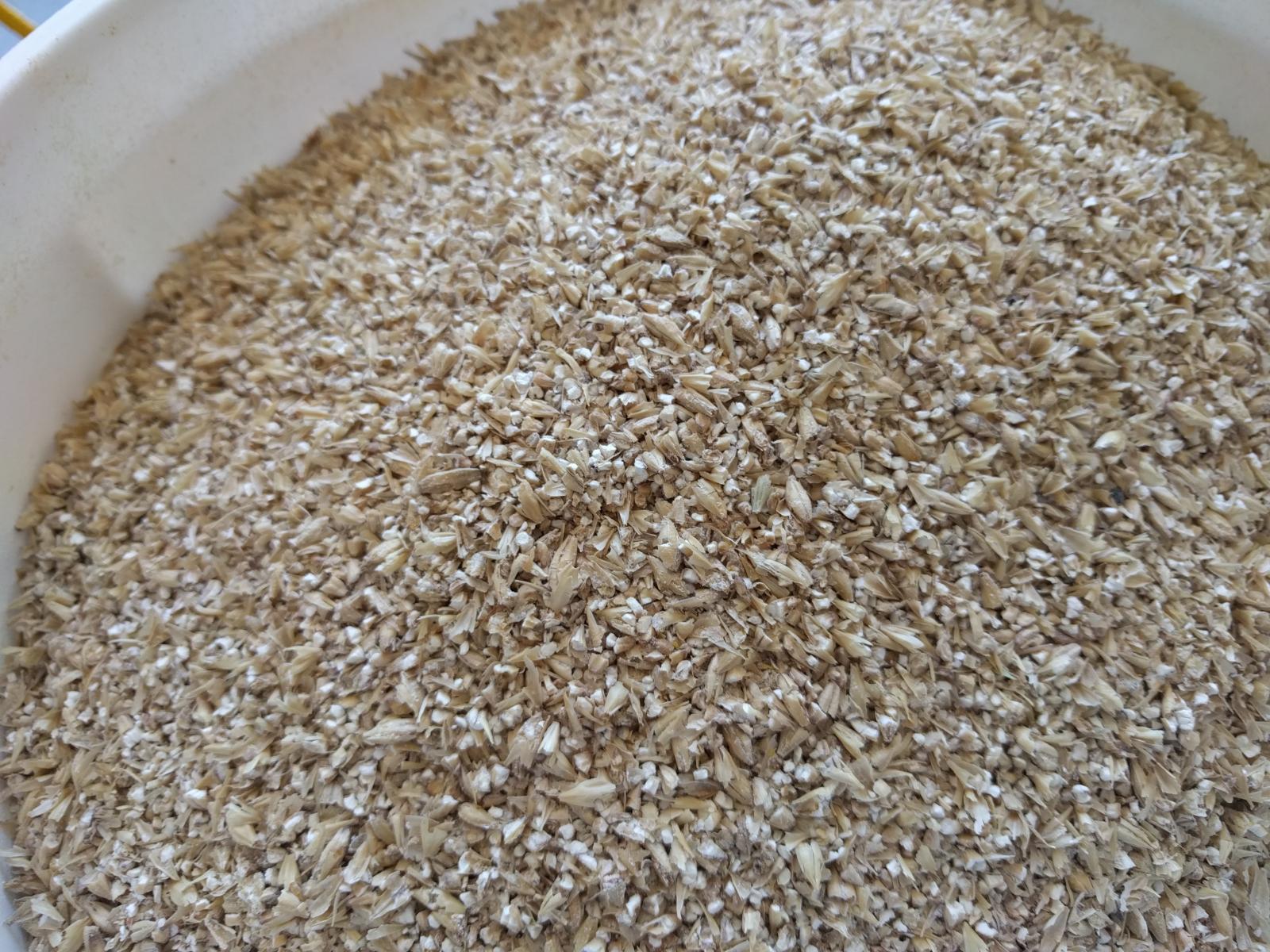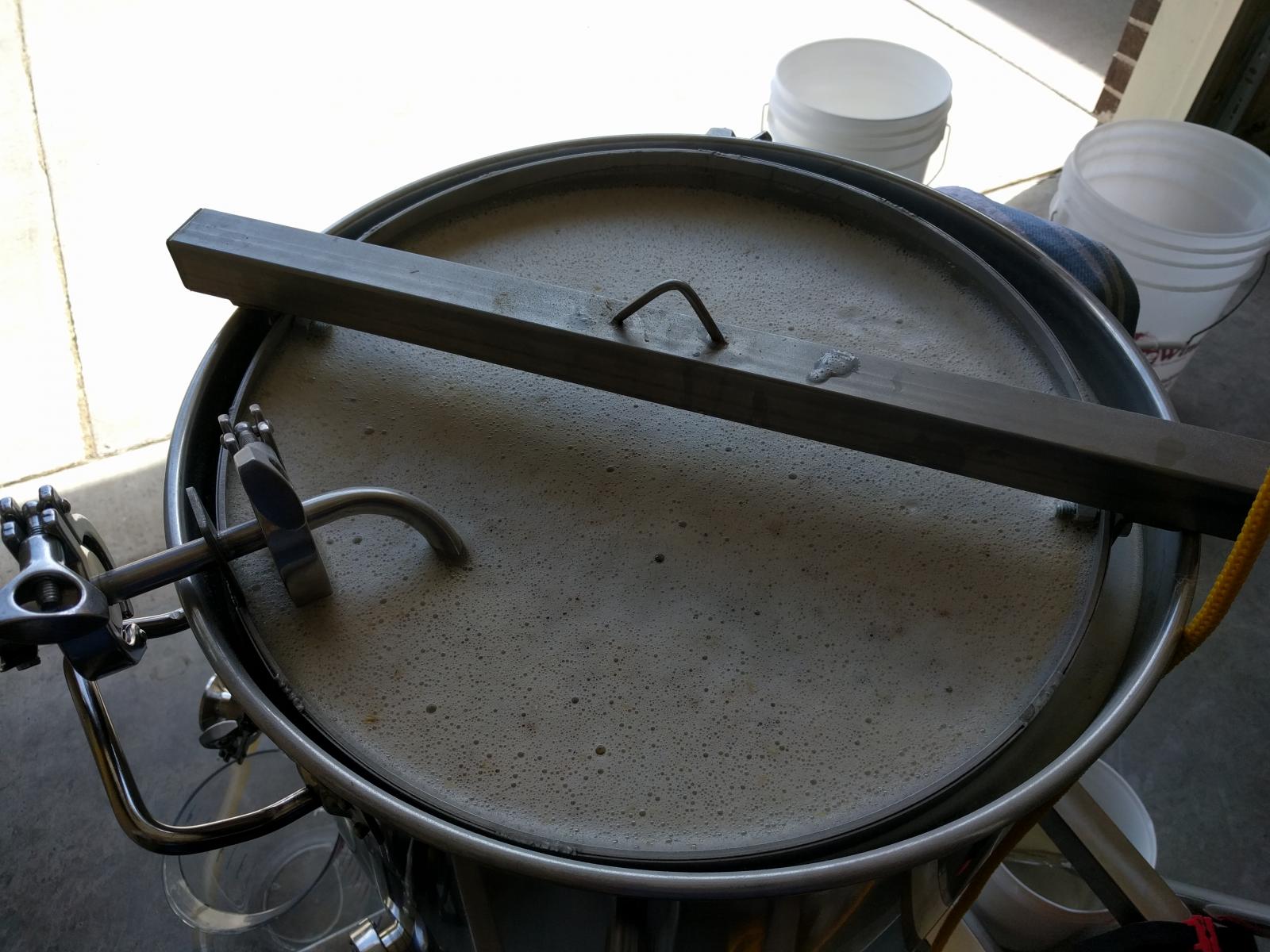I have a few brews under my belt with my new single vessel electric system and it seems like others with the same system are getting better results. For my last brew I told BeerSmith to expect a 60% efficiency and after I ended up at 55%. My rig has a solid sided mash basket with a pump for mash re-circulation. I've calibrated the temp sensor and made sure to use a Thermapen during the process to double check.
Here is the grain bill for this 10g batch:
22 lbs Pale Malt (2 Row) US (2.0 SRM) Grain 1 85.4 %
1 lbs Caramel Wheat Malt (46.0 SRM) Grain 2 3.9 %
1 lbs Munich Malt (9.0 SRM) Grain 3 3.9 %
1 lbs Victory Malt (25.0 SRM) Grain 4 3.9 %
12.0 oz Peat Smoked Malt (2.8 SRM) Grain 5 2.9 %
And here are some stats and notes:
I just realized that from post boil to finish I'm missing 1.24g. My guess is one of my measurements is off because I don't think I lost that much in the hoses or chill plate. To be fair the volume measurements during the process are done with a ruler so the math is a bit fuzzy.
Anyway, can anyone look at this data and tell me if it seems about right for my setup or if maybe I'm doing something wrong? I'm trying to not get obsessed with the numbers but my old 5g setup used a single batch sparge with a bag and cooler and my recipes were in the 73% range. My beers are coming out OK but if I'm to expect 55% at best I need to adjust my grain bills to get back the expected ABV. This will be really bad if I try some high gravity recipes without adjusting accordingly.
Here is the grain bill for this 10g batch:
22 lbs Pale Malt (2 Row) US (2.0 SRM) Grain 1 85.4 %
1 lbs Caramel Wheat Malt (46.0 SRM) Grain 2 3.9 %
1 lbs Munich Malt (9.0 SRM) Grain 3 3.9 %
1 lbs Victory Malt (25.0 SRM) Grain 4 3.9 %
12.0 oz Peat Smoked Malt (2.8 SRM) Grain 5 2.9 %
And here are some stats and notes:
- Crushed myself at .049 gap
- 16.5 gallons of water - full volume mash at 150 for 60 minutes.
- Measured pH 5.51
- 10 minute mash out at 168
- Estimated preboil volume 13.58
- Measured preboil volume 14.10 (I can't get the grain absorption setting in BS right)
- Estimated preboil gravity at 60% 1045
- Measured preboil gravity 1043
- 60 minute boil
- Estimate OG at 60% 1053
- Measured OG 1050
- Post boil vol 12.56
- Collected wort vol 10.5
- Left over trub 1g
I just realized that from post boil to finish I'm missing 1.24g. My guess is one of my measurements is off because I don't think I lost that much in the hoses or chill plate. To be fair the volume measurements during the process are done with a ruler so the math is a bit fuzzy.
Anyway, can anyone look at this data and tell me if it seems about right for my setup or if maybe I'm doing something wrong? I'm trying to not get obsessed with the numbers but my old 5g setup used a single batch sparge with a bag and cooler and my recipes were in the 73% range. My beers are coming out OK but if I'm to expect 55% at best I need to adjust my grain bills to get back the expected ABV. This will be really bad if I try some high gravity recipes without adjusting accordingly.









![Craft A Brew - Safale S-04 Dry Yeast - Fermentis - English Ale Dry Yeast - For English and American Ales and Hard Apple Ciders - Ingredients for Home Brewing - Beer Making Supplies - [1 Pack]](https://m.media-amazon.com/images/I/41fVGNh6JfL._SL500_.jpg)


















































